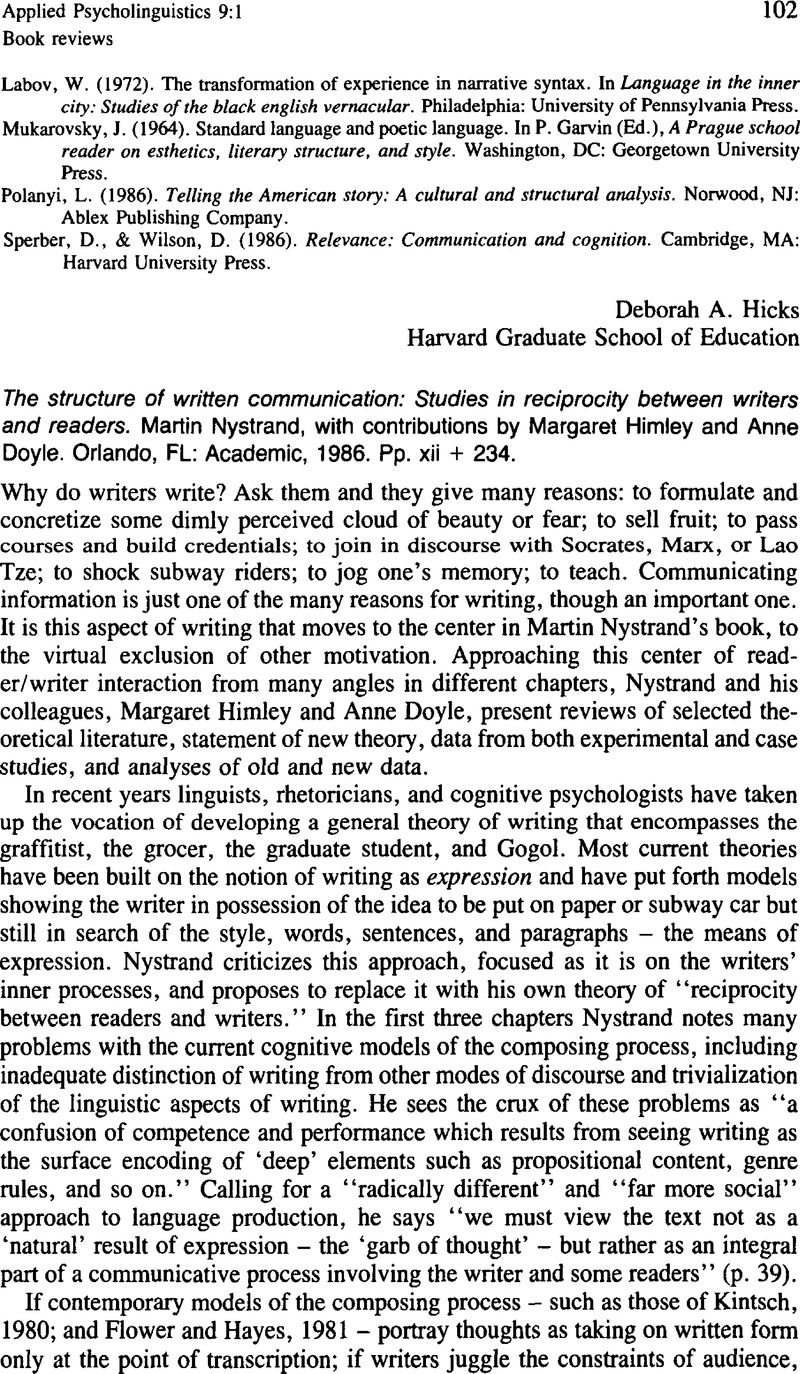No CrossRef data available.
Article contents
The structure of written communication: Studies in reciprocity between writers and readers. Martin Nystrand, with contributions by Margaret Himley and Anne Doyle. Orlando, FL: Academic, 1986. Pp. xii + 234.
Published online by Cambridge University Press: 28 November 2008
Abstract
An abstract is not available for this content so a preview has been provided. Please use the Get access link above for information on how to access this content.

- Type
- Book reviews
- Information
- Copyright
- Copyright © Cambridge University Press 1988
References
REFERENCES
Bissex, G. (1980). Gnys at wrk: A child learns to write and read. Cambridge, MA: Harvard University Press.Google Scholar
Britton, J., Burgess, T., Martin, M., McLeod, A., & Rosen, H. (1975). The development of writing abilities (pp. 11–18). London: Macmillan.Google Scholar
Flower, L., & Hayes, J. R. (1981). A cognitive process theory of writing. College Composition and Communication, 32, 365–387.CrossRefGoogle Scholar
Kintsch, W. (1980). Psychological processes in discourse production. Technical report no. 99. Boulder, CO: Institute of Cognitive Science.Google Scholar
Olson, D. R. (1977). From utterance to text: The bias of language in speech and writing. Harvard Educational Review, 47, 257–281.CrossRefGoogle Scholar
Olson, D. R. (1981). Writing: The divorce of the author from the text. In Kroll, B. & Vann, R. (Eds.), Exploring speaking-writing relationships: Connections and contrasts. Urbana, IL: National Council of Teachers of English.Google Scholar




